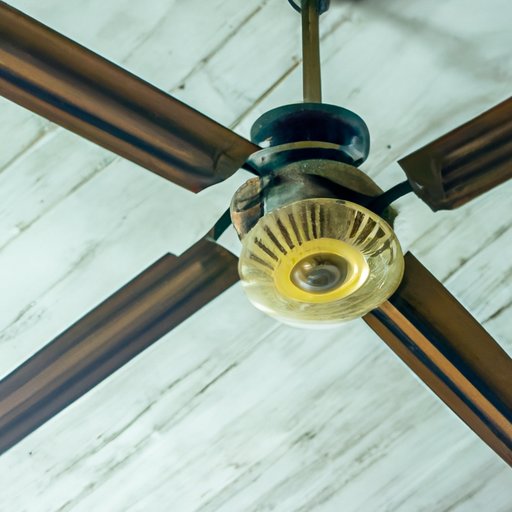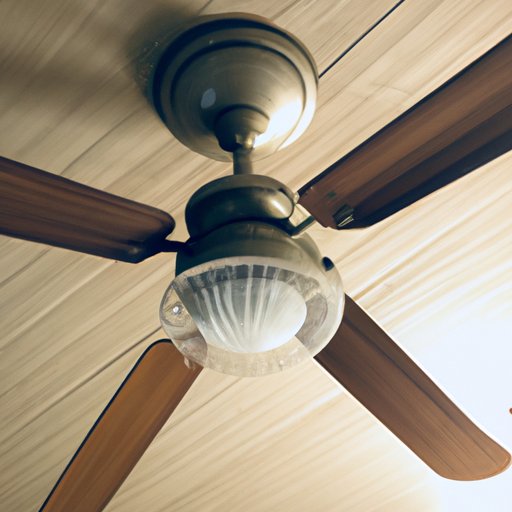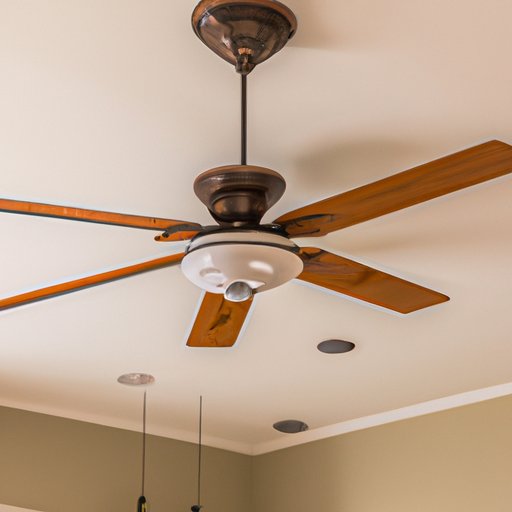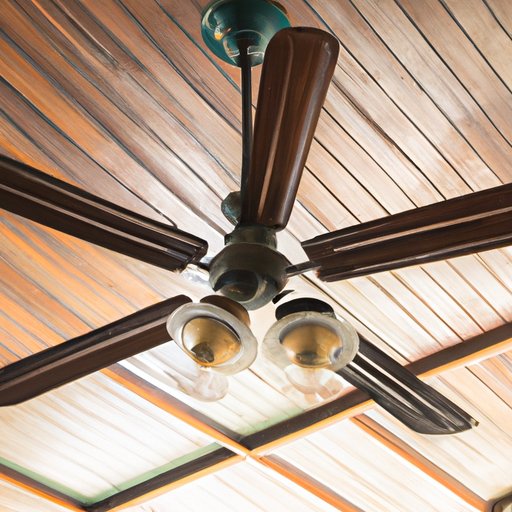Introduction
A ceiling fan is a mechanical device that uses rotating blades to circulate air in a room or space. They are used to improve air circulation and create a cooling effect by pushing air downwards. While ceiling fans are a common sight in many homes today, it wasn’t always this way. So when were ceiling fans invented and what role have they played in modern home design?
In this article, we will explore the history of ceiling fans and how they have evolved over time. We’ll look at the original inventor, Philip Diehl, and his influence on modern fan designs. We’ll also examine the impact of ceiling fans on home comfort and how they have become an integral part of modern home design.

A Historical Look at the Invention of Ceiling Fans
The concept of a ceiling fan dates back to ancient civilizations such as China, where manual fans were used to cool down buildings. However, the first electric ceiling fan was invented in 1882 by Philip Diehl, an American engineer. His invention was based on an existing electric motor, which he modified with blades attached to it. This allowed the fan to be powered by electricity, making it much more efficient than traditional hand-powered fans.
Diehl’s invention revolutionized the concept of home cooling and ventilation, and soon after its invention, ceiling fans began appearing in commercial establishments across the United States. By the early 20th century, ceiling fans had become a staple in many homes and businesses. As technology advanced and materials improved, ceiling fans became even more efficient and popular.
How Have Ceiling Fans Evolved Over Time?
Since their invention, ceiling fans have seen numerous advances in design and technology. Early models were made of wood and metal, but as time went on, materials such as plastic and composite materials began to be used. This allowed for lighter and more durable fans that could move more air while using less energy.
In addition, advances in motor technology have led to more efficient fans that can generate more power while using less energy. This has resulted in increased energy savings for homeowners, as well as improved air circulation and ventilation.
The Inventor Behind the Ceiling Fan
As mentioned earlier, the electric ceiling fan was invented by Philip Diehl in 1882. He was an American engineer who had been working on inventing an electric motor for sewing machines. He realized that if he could attach blades to the motor, it would create a powerful fan that could be powered by electricity.
Diehl’s invention revolutionized the concept of home cooling and ventilation, and his legacy continues to this day. Many modern ceiling fans still use the same basic design principles he developed, although they have been improved upon over the years.

Exploring the Impact of Ceiling Fans on Home Comfort
Ceiling fans have long been used to improve air circulation and ventilation in homes. By moving air around a room, they can help keep the air cool and reduce the need for air conditioning. This can result in significant energy savings, as well as improved comfort levels in the home.
In addition, ceiling fans can help improve air quality by circulating stale air out of a room and bringing in fresh air. This can reduce the risk of respiratory problems, as well as allergies and other health issues.
Where Did the Idea for Ceiling Fans Come From?
The concept of a ceiling fan has been around for centuries. Early versions of the fan were used in ancient China and India, where people would hang fabric from the ceiling and use a fan to blow air through it. This allowed them to stay cool without needing to rely on electricity.
In the 19th century, inventors began experimenting with the idea of powering a fan with electricity. This eventually led to the invention of the electric ceiling fan by Philip Diehl in 1882. His invention revolutionized the concept of home cooling and ventilation, and it quickly spread across the United States.
An Overview of Ceiling Fan Technology Through the Ages
Ceiling fan technology has changed drastically since its invention in the late 19th century. Early models were made of wood and metal, and had limited capabilities. But as technology advanced, so did ceiling fans. Motors became more powerful and efficient, allowing for larger and more powerful fans that could move more air.
In addition, materials such as plastic and composite materials have been used to create lighter and more durable fans. This has allowed for greater versatility in design, as well as increased energy efficiency.

Examining the Role of Ceiling Fans in Modern Home Design
Today, ceiling fans are more popular than ever. Not only do they provide cooling and ventilation benefits, but they can also add a decorative element to any room. Many modern ceiling fans come in a variety of colors and styles, allowing homeowners to customize their space and create a unique look.
In addition, ceiling fans have become increasingly efficient in recent years. Many now use DC motors that use up to 70% less energy than traditional AC motors, resulting in significant energy savings for homeowners.
Conclusion
Ceiling fans have come a long way since their invention in 1882. From simple wooden and metal models to modern, energy-efficient designs, ceiling fans have become an integral part of modern home design. They provide cooling and ventilation benefits, as well as improved air circulation and health benefits.
The invention of the electric ceiling fan is credited to Philip Diehl, an American engineer. His legacy lives on in modern fan designs, which have been improved upon over the years to become more efficient and versatile. Ceiling fans continue to play an important role in home comfort and design, and their popularity shows no signs of slowing down.
(Note: Is this article not meeting your expectations? Do you have knowledge or insights to share? Unlock new opportunities and expand your reach by joining our authors team. Click Registration to join us and share your expertise with our readers.)
